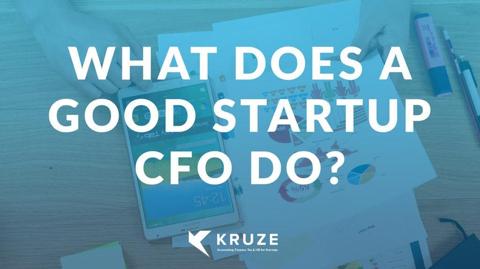
We’ve been helping a number of founders switch to a new bank account due to the closure of SVB by the Federal Deposit Insurance Corporation (FDIC). If you’re making a switch, here’s a checklist of things you should do to make the transition as smooth as possible.
Checklist for moving bank accounts
- Find a new banking provider and open a new account (or new accounts). You’ll want to find a provider that meets your needs, including the types of accounts you need, online banking tools, and customer service.
- Many founders are choosing large banks like JPM, Bank of America, etc.
- Want more than $250,000 in FDIC insurance?Read our piece on how other founders are getting more by using specialized bank accounts from Bank of America, First Republic, Bridge Bank and other programs through fintech companies like Brex, Rho and Treasure.
- Set up your new bank account’s profiles, including your online access. You should enroll in any services you need, download any applications, set up new passwords, and verify your accounts.
- You may need your Employer Identification Number (EIN) Confirmation Letter (CP 575) if you’re moving your funds to a larger bank with a more complex compliance process.
- Your EIN letter is a computer-generated form that was mailed to you from the IRS when you requested your EIN. The CP 575 letter is only issued one time and can’t be reissued.
- If your law firm set up your EIN they may have emailed you your EIN before the IRS sent you the CP 575 letter.
- If you’ve lost or misplaced your EIN Confirmation Letter, you will need to request an EIN Verification Letter (147C) from the IRS by calling 1-800-829-4933. **Note: Only an owner can request a 147C letter. The 147C letter will serve the same purpose as the CP 575 letter.
- The IRS will not send communication by email for security reasons. You’ll need to get your EIN Verification Letter by mail (4-6 weeks) or by fax (including digital/online fax). **Note: If you are using digital/online fax and the IRS agent asks you if you have a secure and private fax next to you, simply respond yes.
- Understand how you will fund the new bank account
- The FDIC will open up to $250,000 on Monday the 13th, and the FDIC-insured portion of the money is expected to be available by EOD.
- The next ‘dividend’ payment will supposedly be later in the week of the 13th
- SAFE notes/inside rounds from existing investors
- Loans from investors/founders - this has some possible implications if your startup has other loans, so check with your attorney. AND you’ll want to create the right paperwork for this as well, so consult with legal counsel.
- Transfer your funds to your new account. This may require verification in some cases.
- Disconnect your old account from your payroll provider. **Note that you should check your payroll company’s processing times to ensure that you’re not interfering with a current payroll that’s already been run or in-process.
- Justworks provides information to help you switch your bank account.
- Gusto provides information to help you switch bank accounts. Gusto also has a Resource Hub that provides information and a FAQ about the SVB closure.
- Rippling customer support and FAQ. **Note: You will need to sign in to your Rippling account to access this information.
- Connect your new account to your payroll provider. Most startup payroll providers will be able to do this through an authentication app, but some may require a 2-3 day validation process with micro deposits. When you receive those micro deposits, please enter them as instructed in your payroll provider platform.
- For the providers we recommend this shouldn’t require anything from your employees.
- Review and compile a list of any other automated deposits and payments, any linked accounts (ie. credit card accounts with your bank or external card providers), and review your bank statement to make sure you didn’t miss anything.
- Provide any customers with your new wire/ACH details
- Set up your new banking details on any vendor platforms that you use for routine payments
- Some contracts (like office leases) require you to keep a minimum balance in the account of your designated bank account with them (a letter of credit) to stay in compliance.
- If you are moving money to a new bank, review your lease agreements with your landlord, and ensure that you are providing proper notification and are in compliance with any letter of credit requirements maintained therein. Consult your attorney.
- Set up your merchant processing / revenue collection process.
- Turn off the auto-transfer function within your Stripe account, and all other merchant processing systems.
- Disconnect your former bank from your Stripe account, and all other merchant accounts.
- Connect your new bank to your Stripe account, and all other merchant accounts. Most startup-friendly providers will provide authentication through Plaid or another authentication service; however, some may require you to authenticate over a 2-3 day process with micro deposits into your new bank account. When you receive those micro deposits, please enter them as instructed in your Stripe or other merchant accounts.
- Connect your invoicing and accounting systems. * Quickbooks Online
- Sign in to QuickBooks Online in a web browser.
- Go to Settings and then select Account and settings.
- Select the Payments tab.
- Select Add New Bank Account.
- Enter the routing number and account number of your new bank account.
- When you’ve entered all the information, select Save.
- Link your new bank account as the primary payment account to your credit card accounts * Note that if your credit card account allows you to split payment between multiple bank accounts, you will have to switch them as well * Ramp provides information to help you switch your bank account. * Brex provides information to help you switch your bank account.
- Connect your accounts payable systems. * Bill.com (Bill.com published two announcements on SVB here and FAQ here).
- From the Home screen in your Bill.com app, click on the Options bars in the top left corner.
- Select Settings.
- Select Bank Accounts.
- Select Edit on the bank you want to edit.
- Make the changes you’d like.
- Select Done. * Airbase customer support. * Routable provides information about switching your bank account.
- Download bank statements. * Download AT LEAST the most recent months’ bank statements and store them in a secure place, such as a company document storage system like Google Drive or Box. * Ideally download all available bank statements and store them so that you have them for your records and possibly for due diligence.
We’ve also published this checklist for moving banks on our blog so that it’s easy for you to share with your team and network, if you’d like.
The takeover of SVB by the banking regulators was a major shock to the tech ecosystem. We hope that your startup is able to weather the storm, and we hope that this information on how to move your bank account was helpful.












